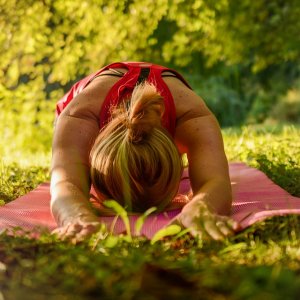Static Stretching vs Dynamic Stretching
 Static Stretching vs Dynamic Stretching
gearweare.net
Static Stretching vs Dynamic Stretching
gearweare.net
Although the exact advantages linked to stretching have been thoroughly debated, there is a consensus that stretching is an important part of overall athleticism and health. This is because stretching increases an individual’s flexibility. The range of movement needed to excel within sports differs, however, there are few sports where flexibility doesn’t matter at all. Stretching has also been credited with decreasing injury, but the actual research into the truth of this claim has produced varying results. Furthermore, there is debate about whether stretching can improve performance.
Figuring out the true results of stretching is further complicated by the fact that there are different types of stretching that may produce different effects. The two types of stretching that most people utilize during their workout wheather on treadmills, or spin bike, regimens are static vs dynamic stretching. In this article, these two types of stretching are explained. The current thought on how each of these types of stretching may impact flexibility, injury, and performance is then presented and recommendations for when each type of stretch should be done are given.
Table of Contents
Static Stretching
Static stretching is the type of movement that most of us think of when stretching comes up. It involves getting into strange body positions that push one to the outer limits of their range of motion and holding that position for an elongated period of time. An example of a static stretch is touching your toes with your fingertips, and yoga is an activity that involves a large amount of static stretching. All you need is a best yoga mat and a little bit of practice.
Static stretching for flexibility – Static stretching can greatly improve range of motion and enhance one’s flexibility. When engaging in static stretching one must be careful not to push the motion too far though. The sensation that one is after is slightly uncomfortable, in a way that makes obvious that the limits of one’s range of motion are being expanded. However, any sharp, persistent, or intense pain indicates that the stretch is being taken too far. If any of those sensations are experienced, let up on the stretch immediately. If that happens, you could use muscle relaxer cream to relieve the pain.
Static stretching for injury – There have been a few studies that indicate that static stretching may slightly decrease the instance of injury in athletes, however, the results are varied and no true consensus on this has been reached. However, there is more conclusive research that has shown static stretching reduces the likelihood of muscle strains.
Static stretching for performance – Although there is inconclusive evidence as to the effects of static stretching on performance overall, there has been extensive research that shows that static stretching reduces performance when done immediately before physical activity. However, these results have also shown to only hold true when the stretches being done last for more than 60 seconds. Moreover, the performance impacts are negligible, meaning they only really apply to elite athletes.
Other benefits of static stretching – Static stretching is a slowly placed activity that is often linked with the breath in a way that can be quite calming. For this reason, static stretching makes for an ideal cool-down activity that will slowly bring the heart rate down while also preparing the body for the more relaxed activity that comes after one works out.
When and how long to statically stretch – Some static stretching may be done at the beginning out a workout, however, these routines should involve no more than five minutes of stretching, with each stretch being held for about 30 seconds. Longer static stretching routines should be included at the end of a workout, with stretches being held for 30 to 60 seconds. Try to do ten to fifteen minutes of stretching after each workout.

Dynamic Stretching
Dynamic stretches are a range of movement exercises that use motion to keep joints healthy and flexible. These types of stretches have individuals move to the outer limits of their flexibility without going body the already established normal range of motion. Examples of dynamic stretches are leg lifts, arm circles, and jumping jacks. These types of stretches keep one limber but don’t push the outer edges of one’s flexibility to the same extent that static stretches do.
Dynamic stretches for flexibility – Dynamic stretching has been shown to improve flexibility, however, it does so to a lesser degree than static stretching. It also helps with the range of movement and can keep joints healthy.
Dynamic stretches for injury – There has been no research that shows that dynamically stretching helps prevent injury.
Dynamic stretches for performance – Although results are far from conclusive, there has been some research that shows that dynamically stretching may marginally improve athletic performance. Unlike static stretching, there are no results that show dynamic stretching hurts performance, so even if it’s not helping outright dynamic stretching is definitely not making one’s performance worse. There are also a lot of exercise equipment that you can use for workout such as pull up bars, dumbbells, ab rollers, etc.
Other benefits of dynamic stretching – Since dynamic stretching involves active movement it can help get one’s heart rate up. For this reason, dynamic stretching can be a great warmup before any type of workout. The motion involved in dynamic stretching also helps improve motor abilities and helps prepare individuals for their larger workout when the movement of their sport is mimicked.
When and how long to dynamically stretch – Do a dynamic stretching routine right before your larger workout. Dynamic stretching routines should go one for a minimum of 5 minutes and a maximum of 15 minutes. If a static stretching routine is also included before a workout, make sure to do that routine before the dynamic stretching routine.
A Final Note on Stretching
The static and dynamic stretches that one does should be chosen to specifically target the flexibility needs of the sport that one does. For example, the gymnast will need to put a lot of effort into static stretching to gain extreme flexibility, while runners don’t need the same level of flexibility but should keep their legs loose and use only high quality running shoes. Think about the sports that you do the most and what body parts require the most attention in this sport, then cater to your stretching regime to meet these needs.











